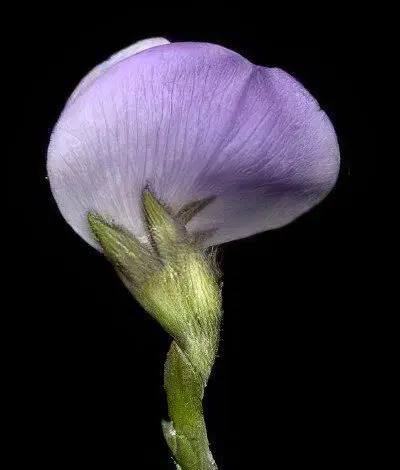Contents
Useful properties and application of psoralea drupe
Botanical characteristics of psoralea

Psoraleia is a perennial herbaceous plant of the legume family (Leguminosae). Its straight stems, slightly branched above and slightly woody below, reach a height of 1–1,5 m. They are densely pubescent with glandular and simple hairs. The many-headed root of the plant goes into the ground to a depth of 4 meters. The lower leaves are trifoliate, the upper ones are rounded or oval, 3–4 cm long. Whitish-lilac flowers are collected in loose brushes. The fruits are single-seeded non-opening beans on very short stems.
Psoralea blooms from May to July, bears fruit from June to September.
Spread. Psoralea grows in the republics of Central Asia and in South Kazakhstan under various conditions, but mainly on loess piedmont plains and foothills, where it sometimes forms almost pure thickets. The plant is often found on fallows and as a weed in rainfed crops, on irrigated and irrigated lands, as well as on thin broken sands, among stunted shrubs, near wells.
Stocking In medicine, beans are used, which are harvested in June-August. Cut off the tops of the stems, then separate the beans.
Useful properties of psoralea
A large amount of coumarins was found in the fruits of the plant, the roots contain tannins, and essential and fatty oils were found in the aerial part. From the beans and roots of the plant, the drug “Psoralen” is obtained, which promotes skin pigmentation in albinism.
Beans are the main medicinal raw material. The collection and procurement of raw materials is carried out in the second half of June and ends in August. The fruits are stored in bags, packaged in 40 kg, in well-ventilated areas on racks. Shelf life of products – no more than three years.
The use of psoralea
The drug “Psoralen”, produced on the basis of an extract from a plant, is used in official medicine for the treatment of vitiligo, circular and nested baldness. It well stimulates the formation of pigment in the skin under the influence of ultraviolet rays. The drug is prescribed in a course according to a special scheme. In folk medicine, in the treatment of vitiligo, an infusion of the plant is used.
Fruit tincture: 10 g of beans are required to infuse for 2 weeks in a 70% alcohol solution and take 3 drops 50 times a day before meals. The tincture can be used externally.
Psoralea drupes
This is a perennial herbaceous plant with a strong light brown root, going deep into the soil by 4 meters. This species has densely pubescent straight stems up to two meters high, with glandular hairs. The leaves are compound trifoliate, with an apical leaflet. Dirty-lilac flowers are collected in many-flowered spike-shaped brushes. The fruits are small, one-seeded, densely pubescent beans on a short stalk. The plant blooms from May to August, bears fruit from July to September.
The plant is widely distributed in the expanses of South Kazakhstan and Central Asia. It can be found on loess piedmont plains, foothills, among low-growing shrubs, on depleted pastures with light sandy soils. The fruits are used for medicinal purposes. From the beans, the drug “Psoralen” is obtained, which is used to treat nested circular baldness and vitiligo disease.
Contraindications to the use of psoralea
The use of preparations from psoralea is contraindicated in skin tuberculosis, diseases of the liver, kidneys, blood, cardiovascular and central nervous system. When used, side effects such as dizziness and nausea are possible. Psoralea is undesirable for use by persons over 50 years of age, pregnant and lactating women.









